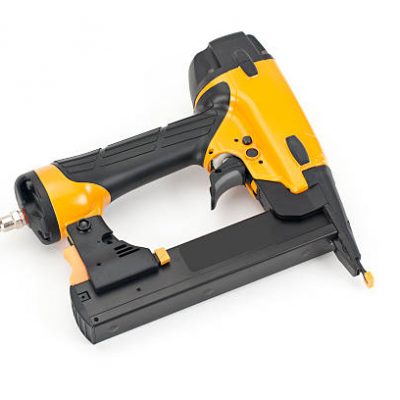Project Report For Nail Gun
Introduction
Project Report for Nail Gun is as follows.
Nail guns are used in workplaces during assembly, such as when creating beds or pallets. They are also frequently utilised on the job site for shop fitting, timber frame building, and so on. The usage of nail guns has expanded rapidly in recent years, and nail gun occurrences now account for a significant portion of the HSE’s woodworking accident statistics.
Nail guns work by driving a piston at high speed onto the head of a nail (or large staple) to drive the fastening into the wood in one customizable strike. The nails are kept in a magazine in strips and range in length from about 15mm to 100mm. There are three kinds of nail guns. The compressed air kind is suitable for factory use.
Some nail guns use explosives to operate. Power-actuated nail guns contain flammable gas that, when activated, causes a controlled explosion to drive the nails into the item or workpiece with which they are employed. Although there are many different varieties of nail guns, pneumatic nail guns are the most frequent. A pneumatic nail gun is a type of nail gun that drives nails with compressed air. It has an air tank that pushes the nail forward and into the object or workpiece with which it is utilised.
Timber nail guns have built-in safety mechanisms, and before shooting by pressing the trigger, the nose guard must be retracted a sufficient distance to activate the firing mechanism. This is intended to happen when the gun is slammed on the wood. However, HSE investigation of nail gun events revealed that these safety mechanisms can be overcome, either accidentally or purposely.

Uses of Nail Gun
A nail gun, also known as a nailgun or nailer, is a type of hammer that is used to drive nails into wood or other materials. Compressed air (pneumatic), electromagnetism, highly flammable gases such as butane or propane, or, in the case of powder-actuated instruments, a small explosive charge are typically used to power it. Nail guns have mostly supplanted hammers as the favoured tool among builders.
To speed up the construction of home floor sheathing and sub-floors, the first nail gun was brought to the market. The original nail gun could fasten 40-60 nails per minute while the operator stood. It had a nail capacity of 400-600.
Get Completely Custom Bankable Project Report
Market Potential Of Nail Gun
The Global Pneumatic Nail Gun sales market is estimated to grow at a CAGR of 5.5% between 2018 and 2030, from USD 3.1 billion to USD 4.3 billion.
As the construction industry grows, so does the demand for tools and equipment that can improve efficiency and productivity. Nail guns are one such tool that can help construction workers to work faster and more efficiently. The demand for nail guns in India is expected to grow in line with the growth of the construction industry.
The current market for nail guns in India is relatively small compared to other countries, such as the United States and China. This is partly due to the fact that nail guns are not as widely used in India as they are in other countries. Many construction workers in India still use traditional methods, such as hammers and nails, which can be time-consuming and labor-intensive.
Nail guns aid in the optimisation of construction operations by increasing the overall speed of the procedure. Growing need in the construction sector for effective and convenient tools to minimise total lead time and increase effectiveness is likely to drive market expansion. Rising product demand from the domestic end-use segment is also expected to drive market expansion. The product’s easy availability through retail and e-commerce channels is projected to remain a positive aspect for consumers.

